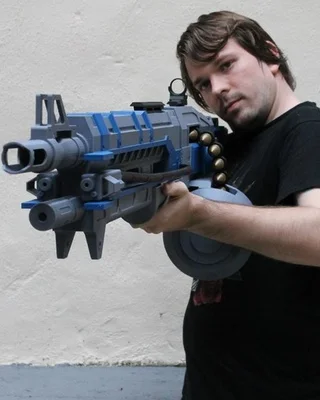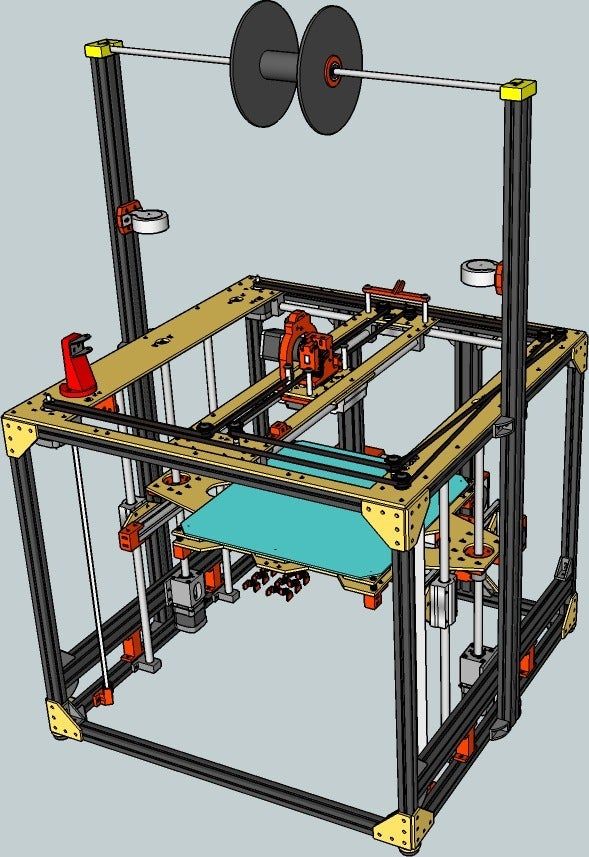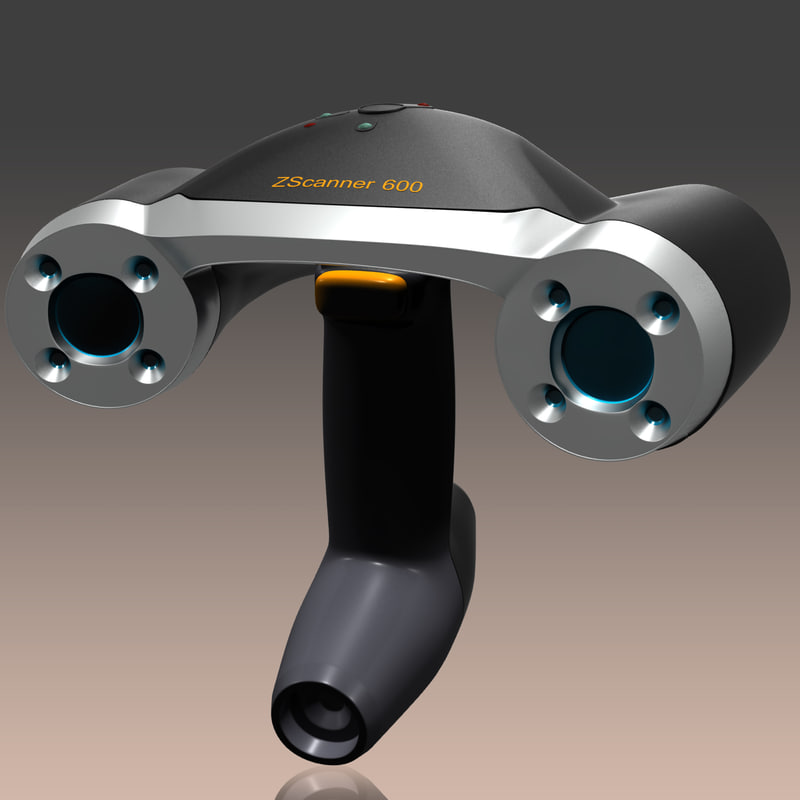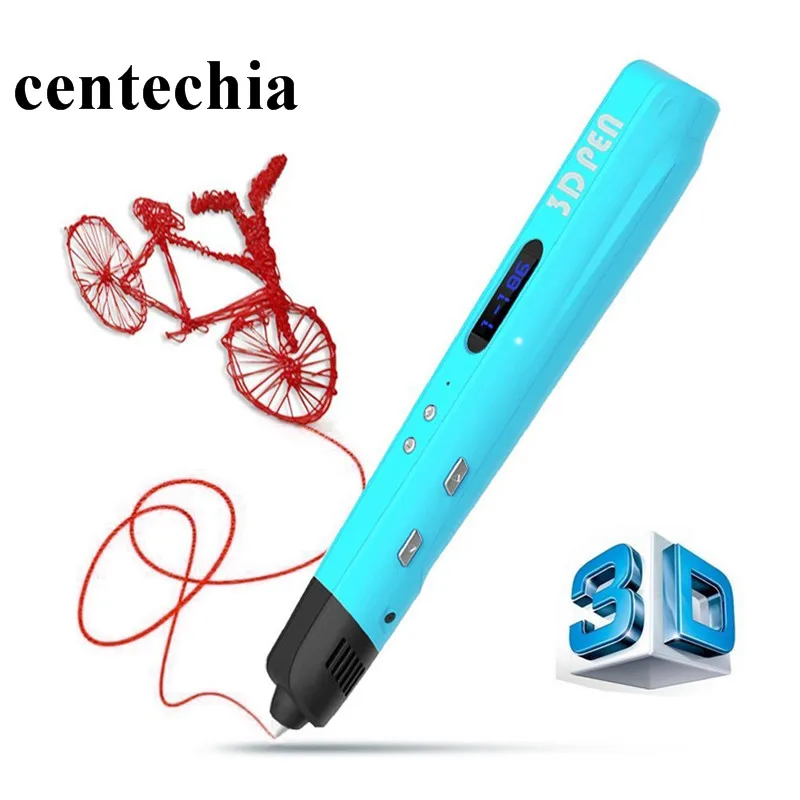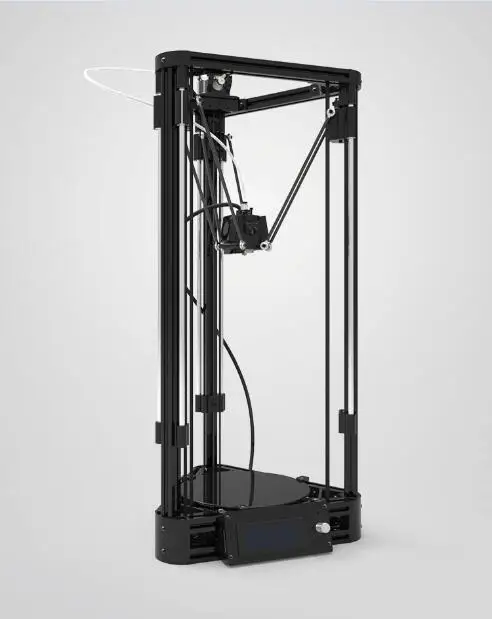3D printer industrial use
How to Choose an Industrial 3D Printer
The 3D printing industry went through its most striking hype cycle during the early 2010s, when promoters claimed that the technology would find broad usage in consumer applications. Away from the frothy consumer 3D printing market, however, additive manufacturing technologies continued to advance rapidly.
Industrial 3D printing technologies have been rapidly maturing in many concrete ways, crossing critical thresholds in print quality, reliability, and cost structure. Recent advances in machinery, materials, and software have made 3D printing accessible to a wider range of businesses, enabling more and more companies to use tools previously limited to a few high-tech industries.
Today, industrial 3D printers accelerate innovation and support businesses in various industries including engineering, manufacturing, dentistry, healthcare, education, entertainment, jewelry, and audiology.
An industrial 3D printer can revolutionize a business, as well as lower production costs and lead times. Here’s how to pick one that best suits your company’s needs.
Industrial 3D printing is available to businesses for a variety of applications, from prototypes to production parts. These technologies include fused deposition modeling (FDM), stereolithography (SLA), selective laser sintering (SLS), material jetting, and metal 3D printing.
A common theme across many of these technologies is the recent appearance of highly capable, but more compact and accessible industrial 3D printers, which helped lower the initial investment costs from $100,000 - $200,000 to often below $10,000.
FDM, also known as fused filament fabrication (FFF), is a printing method that builds parts by melting and extruding thermoplastic filament, which a printer nozzle deposits layer by layer in the build area.
FDM is the most widely used form of 3D printing at the consumer level, fueled by the emergence of hobbyist 3D printers. Industrial FDM printers are, however, also popular with professionals.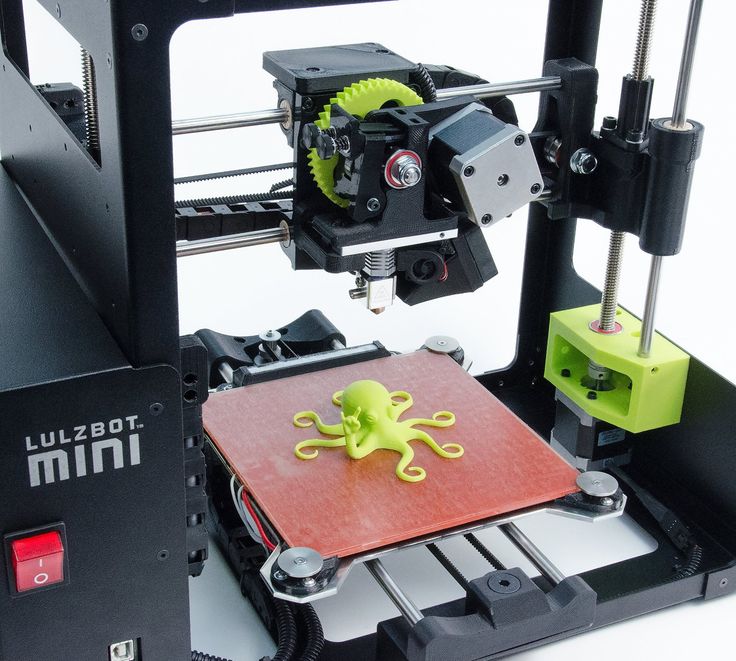
-
Advantages of FDM
FDM works with an array of standard thermoplastics, such as ABS, PLA, and their various blends. This results in a low price of entry and materials. FDM best suits basic proof-of-concept models and the low-cost prototyping of simpler parts.
FDM has the lowest resolution and accuracy when compared to other industrial 3D printing technologies for plastics such as SLA or SLS, which means that it is not the best option for printing complex designs or parts with intricate features. Higher-quality finishes require labor-intensive and lengthy chemical and mechanical polishing processes. Some industrial FDM 3D printers use soluble supports to mitigate some of these issues and offer a wider range of engineering thermoplastics, but they also come at a steep price. With large parts, FDM printing also tends to be slower than SLA or SLS.
FDM printers (left) are ideal for simple shapes, but struggle with complex designs or parts with intricate features, compared to other processes like SLA printers (right).
SLA printers use a laser to cure liquid resin into hardened plastic in a process called photopolymerization. SLA is one of the most popular processes among professionals due to its high resolution, precision, and material versatility.
The Form 3L, a large-format SLA 3D printer from Formlabs, is capable of 3D printing large prototypes the size of a full-scale helmet.
While SLA technology used to be available only in large, complex industrial 3D printers that cost more than $200,000, the process has become much more accessible. With the Formlabs Form 3+ printer, businesses now have access to industrial-quality SLA for just $3,750. Large-format SLA with the Form 3L starts at just $11,000.
-
Advantages of SLA
SLA parts have the highest resolution and accuracy, the clearest details, and the smoothest surface finish of all plastic 3D printing technologies. The main benefit of SLA lies in its versatility; SLA resin formulations offer a wide range of optical, mechanical, and thermal properties to match those of standard, engineering, and industrial thermoplastics.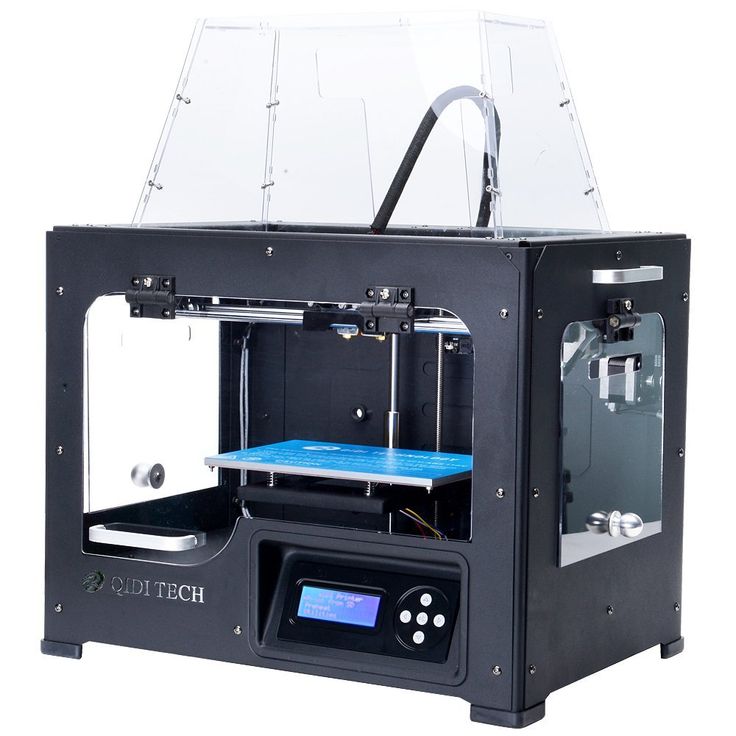
SLA is a great option for highly detailed prototypes requiring tight tolerances and smooth surfaces, as well as molds, tooling, patterns, medical models, and functional parts. It also offers the material with the highest heat deflection temperature of 238 degrees Celsius—which makes it an ideal choice for certain engineering and manufacturing applications—as well as the widest selection of biocompatible materials for dental and medical applications. With Draft Resin, the Formlabs SLA printers are also the fastest options for 3D printing large parts, up to 10X faster than FDM.
SLA’s wide versatility comes with a slightly higher price tag than FDM, but it is still more affordable than all other industrial 3D printing processes. SLA resin parts also require post-processing after printing, which includes washing the parts and post-curing.
Some examples of large 3D printed parts manufactured on the Form 3L.
Sample part
See and feel Formlabs quality firsthand. We’ll ship a free sample part to your office.
We’ll ship a free sample part to your office.
Request a Free Sample Part
SLS printers use a high-powered laser to fuse small particles of polymer powder. The unfused powder supports the part during printing and eliminates the need for dedicated support structures, making SLS a particularly effective choice for complex mechanical parts.
Its ability to produce parts with excellent mechanical capabilities makes SLS the most common polymer additive manufacturing technology for industrial applications.
Just like SLA, SLS used to be only available in large-format, complex 3D printing systems starting at about $200,000. With Formlabs’s Fuse 1 SLS printer, businesses can now access industrial SLS starting from $18,500 with a 30 x 16.5 x 16.5 cm build volume.
Parts printed on the Fuse 1 SLS 3D printer.
-
Advantages of SLS
Since SLS printing doesn’t require dedicated support structures, it’s ideal for complex geometries, including interior features, undercuts, thin walls, and negative features.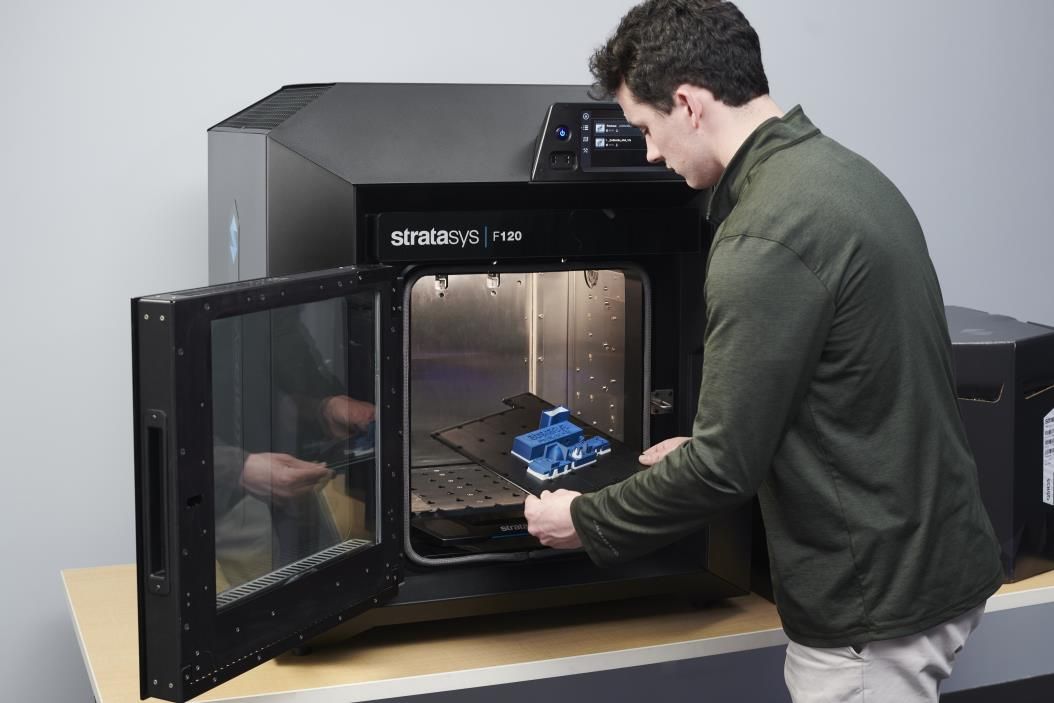 Parts produced with SLS printing have excellent mechanical characteristics, with strength resembling that of injection-molded parts.
Parts produced with SLS printing have excellent mechanical characteristics, with strength resembling that of injection-molded parts.
The most common material for SLS is nylon, a popular engineering thermoplastic with excellent mechanical properties. Nylon is lightweight, strong, and flexible, as well as stable against impact, chemicals, heat, UV light, water, and dirt.
The combination of low cost per part, high productivity, and established materials make SLS a popular choice among engineers for functional prototyping, and a cost-effective alternative to injection molding for limited-run or bridge manufacturing.
SLS has a higher entry price than FDM or SLA technologies. While nylon is a versatile material, material selection for SLS is also more limited than for FDM and SLA. Parts come out of the printer with a slightly rough surface finish and require media blasting for a smooth finish.
Material jetting 3D printers use a print head, similar to those in traditional inkjet printers, to deposit and cure droplets of photopolymer material, which harden under ultraviolet light.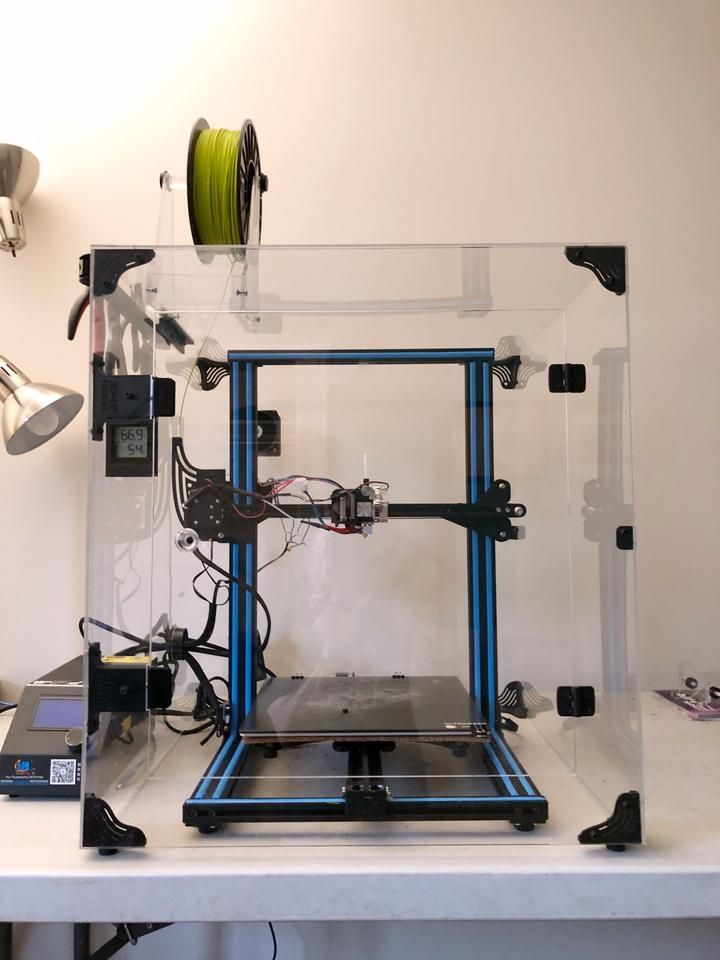 Some more advanced material jetting printers can also create parts from multiple materials.
Some more advanced material jetting printers can also create parts from multiple materials.
Material jetting results in a finished product that is precise and has a smooth finish. The overall accuracy, combined with the fact that it is one of the only printing processes that offers multi-material and full-color printing, makes it an ideal option for realistic prototypes, such as full-color prototypes or anatomical models.
Material jetting printers can only operate with materials that have a low viscosity, which limits material options. The finished products tend to be brittle, photosensitive, and sensitive to heat. Their gradual deterioration makes them less suitable as functional prototypes. For resin 3D printing, SLA offers a wider range of functional materials, including resins that contain particles like wax and glass to imbue them with certain properties.
Beyond plastics, there are multiple industrial 3D printing processes available for metal 3D printing.
-
Metal FDM
Metal FDM printers work similarly to traditional FDM printers, but use extrude metal rods held together by polymer binders.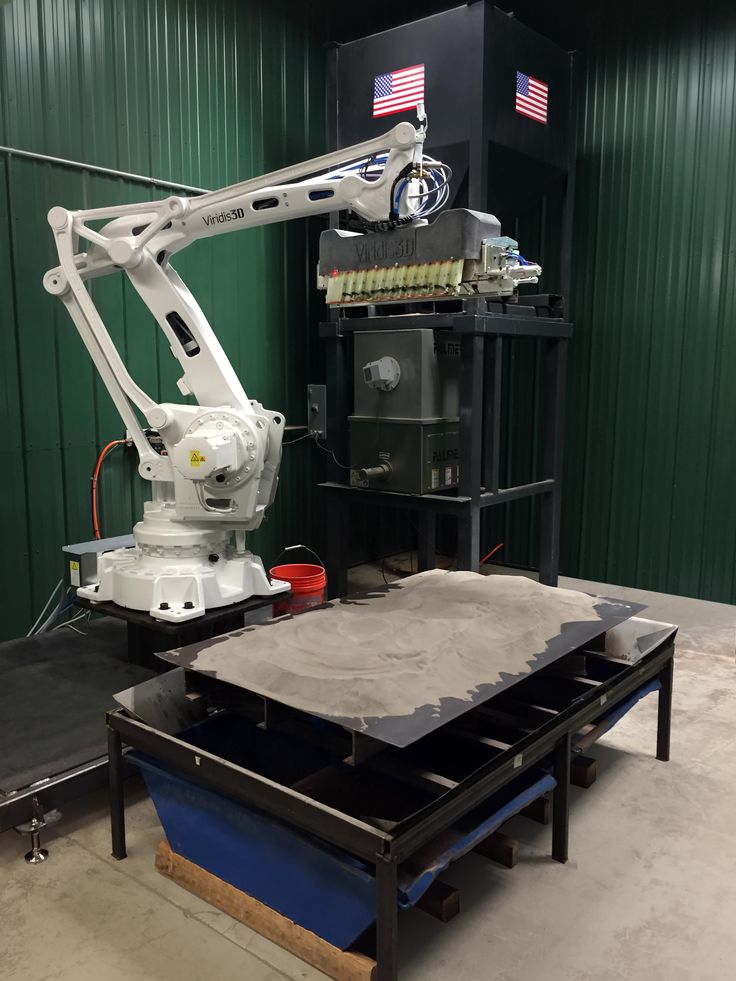 The finished “green” parts are then sintered in a furnace to remove the binder.
The finished “green” parts are then sintered in a furnace to remove the binder.
SLM and DMLS printers work similarly to SLS printers, but fuse metal powder particles together layer by layer using a laser instead of polymers. SLM and DMLS 3D printers can create strong, accurate, and complex metal products, making this process ideal for aerospace, automotive, and medical applications.
While the prices of metal 3D printers have also begun to decrease, with costs ranging from $100,000 to $1 million, these systems are still not accessible to most businesses.
Alternatively, SLA 3D printing is well-suited for casting workflows that produce metal parts at a lower cost, with greater design freedom, and in less time than traditional methods.
White Paper
Get design guidelines for creating 3D printed patterns, walk through the step-by-step direct investment casting process, and explore guidelines for indirect investment casting and sand casting.
Download the White Paper
FDM, SLA, SLS, material jetting, and metal 3D printing have unique advantages and disadvantages across different applications.
| Fused Deposition Modeling (FDM) | Stereolithography (SLA) | Selective Laser Sintering (SLS) | Material Jetting | Metal 3D Printing (Metal FDM, DMLS, SLM) | |
|---|---|---|---|---|---|
| Build volume | Up to 300 x 300 x 600 mm (desktop and benchtop 3D printers) | Up to 300 x 335 x 200 mm (desktop and benchtop 3D printers) | Up to 165 x 165 x 300 mm (benchtop industrial 3D printers) | Up to 300 x 200 x 150 mm (benchtop industrial 3D printers) | Up to 300 x 200 x 200mm (metal FDM), 400 x 400 x 400 mm (large industrial DMLS/SLM) |
| Price range | Starting from $2,500 | Starting from $3,750 | Starting from $18,500 | Starting from $20,000 (multi-material starting from $100,000) | Starting from $100,000 |
| Materials | Standard thermoplastics, such as ABS, PLA, and their various blends. | Varieties of resin (thermosetting plastics). Standard, engineering (ABS-like, PP-like, silicone-like, flexible, heat-resistant, rigid), castable, dental, and medical (biocompatible). | Engineering thermoplastics, typically nylon and its composites (nylon 12 is biocompatible + compatible with sterilization). | Varieties of resin (thermosetting plastics). | Stainless steel, tool steel, titanium, cobalt chrome, and aluminum. |
| Ideal applications | Basic proof-of-concept models, low-cost prototyping of simple parts. | Highly detailed prototypes requiring tight tolerances and smooth surfaces, molds, tooling, patterns, medical models, and functional parts. | Complex geometries, functional prototypes, short-run or bridge manufacturing. | Highly detailed prototypes, including multi-material and full-color realistic prototypes. | Strong, durable parts with complex geometries; ideal for aerospace, automotive, and medical applications. |
| Disadvantages | Lowest resolution and accuracy; not ideal for complex designs or parts with intricate features. | Some materials are sensitive to long exposure to UV light. | Slightly rough surface finish, limited material options. | Limited material options. Finished products tend to be brittle and photosensitive; less suitable for functional prototypes. | High costs and complexity, stringent facility requirements. |
Interactive
Try our interactive ROI tool to see how much time and cost you can save when 3D printing on Formlabs 3D printers.
Calculate Your Savings
There are several applications that capitalize on industrial 3D printers, such as prototyping, hybrid manufacturing, and production.
With rapid prototyping, designers and engineers can create prototypes directly from CAD data faster than ever before, and execute quick and frequent revisions of their designs based on real-world testing and feedback.
Because these parts or assemblies are usually constructed using additive fabrication techniques as opposed to traditional subtractive methods, the phrase has become synonymous with additive manufacturing and 3D printing.
A rapid prototype of a robot hand next to the final end-use product.
Additive manufacturing is a natural match for prototyping. It provides almost unlimited form freedom, doesn’t require tooling, and can produce parts with mechanical properties closely matching various materials made with traditional processes.
With in-house industrial 3D printers, engineers and designers can produce realistic and functional prototypes quicker and at a lower cost than any other production method to quickly iterate between digital designs and physical prototypes. It is now possible to create prototypes within a day and carry out multiple iterations of design, size, shape, or assembly based on results of real-life testing and analysis. Ultimately, the rapid prototyping process helps companies get better products to market faster than their competition.
Hybrid manufacturing combines 3D printing with traditional manufacturing processes like injection molding, thermoforming, or casting. It enhances the production process by improving its flexibility, agility, scalability, and cost-efficiency. As a result, it enables manufacturers to meet changing business needs quickly.
A 3D printed mold for vacuum forming product packaging.
Industrial 3D printers empower the rapid, cost-effective production of jigs, fixtures, and tooling in-house to save days or weeks of lead time, improve operational agility, and dramatically reduce costs versus outsourcing parts to an external vendor to machine from a solid billet of plastic or metal.
-
Tooling
Build custom tooling that stands up to the rigors of the factory floor, and can help solve the toughest manufacturing challenges. Validate manufacturing processes, solve DFM issues, and increase flexibility by direct printing of tooling for applications ranging from injection molding to CNC tube bending.
-
Jigs and fixtures
Reduce costs and increase agility by bringing jig and fixture production in-house with no minimum order quantities, no toolpath programming, wide material selection, and low capital equipment costs. Continuously improve products and respond quickly and effectively to issues on your manufacturing line with jigs and fixtures that improve assembly or QA processes.
White Paper
Download our white paper for guidelines for using 3D printed molds in the injection molding process to lower costs and lead time and see real-life case studies with Braskem, Holimaker, and Novus Applications.
Read the White Paper
White Paper
Download the white paper reducing the cost and lead time of producing jigs and fixtures.
Download the White Paper
As the economics of 3D printing are improving, and the cost-per-part threshold is moving: it’s becoming practical to use the technology in incrementally lower-value, higher-volume applications. Fueled by technology innovation and improving material properties, additive manufacturing is bound to further expand beyond rapid prototyping toward end-use parts and mass production.
Fueled by technology innovation and improving material properties, additive manufacturing is bound to further expand beyond rapid prototyping toward end-use parts and mass production.
Several industries have already incorporated 3D printed materials into their manufacturing processes for creating molds and casting patterns, or even printing end-use parts.
-
Mass Customization
Without the need to invest in costly tooling, use 3D printing to manufacture a variety of complex designs with no more time, energy, or material than producing simple parts. Automated 3D printing solutions can help to scale personalized products for mass-market opportunities such as patient-specific models in healthcare to consumer products like shoes, and earbuds.
Short run production with 3D printing provides flexibility to change designs without sinking high costs into tooling, and a cost-effective manufacturing alternative for producing end-use parts in the tens and hundreds.
Webinar
In this briefing, Formlabs’ Global Business Development Lead Dan Recht will show you how to identify, assess, and benefit from opportunities to use additive manufacturing as a production technology.
Watch the Webinar Now
White Paper
In this white paper, we evaluate the value proposition of bringing SLS 3D printers in-house, in comparison with outsourcing SLS parts from a service bureau.
Download the White Paper
Industrial Applications of 3D Printing: The Ultimate Guide
Industrial Applications of 3D Printing:
The Ultimate Guide
TABLE OF CONTENTS
Introduction
Aerospace & Defence
Automotive
Medical & Dental
Consumer Goods
Industrial Goods
What is the Future of 3D Printing?
Introduction
3D printing, also known as additive manufacturing, has come a long way since it was first developed in the 1980s. While 3D printing originated as a tool for rapid prototyping, it has now evolved to cover a number of different technologies.
While 3D printing originated as a tool for rapid prototyping, it has now evolved to cover a number of different technologies.
The evolution of 3D printing has seen a rapid growth in the number of companies adopting the technology. The applications and use cases vary across industries, but broadly include tooling aids, visual and functional prototypes — and even end-use parts.
As the potential applications for 3D printing increase, companies are beginning to find ways to create new business models and opportunities with the technology.
In this guide, we’ll be exploring the current state of 3D printing across a range of industries, including how the technology is being used across sectors. Using real-life examples, we hope that this guide gives you an in-depth understanding of how 3D printing is being used to drive innovation and business growth.
CHAPTER 1
Aerospace & Defence
The aerospace and defence (A&D) industry is one of the earliest adopters of 3D printing, with the first use of the technology going back to 1989. Now, three decades later, A&D represents a 16.8% share of the $10.4 billion additive manufacturing market and heavily contributes to ongoing research efforts within the industry.
Now, three decades later, A&D represents a 16.8% share of the $10.4 billion additive manufacturing market and heavily contributes to ongoing research efforts within the industry.
The advancement of AM within A&D is in large part driven by key industry players, including GE, Airbus, Boeing, Safran and GKN. These companies and others have identified the value proposition 3D printing brings to:
- Functional prototypes
- Tooling
- Lightweight components
As we can see, 3D printing for aerospace isn’t limited to prototypes. Real, functional parts are also being 3D printed and used in aircraft. A few examples of parts that can be produced with 3D printing include air ducts (SLS), wall panels (FDM) and even structural metal components (DMLS, EBM, DED).
The Benefits of 3D printing for Aerospace & Defence
Low-volume production
For industries like aerospace and defense, where highly complex parts are produced in low volumes, 3D printing is ideal. Using the technology, complex geometries can be created without having to invest in expensive tooling equipment. This offers aerospace OEMs and suppliers a cost-effective way to produce small batches of parts cost-effectively.
Using the technology, complex geometries can be created without having to invest in expensive tooling equipment. This offers aerospace OEMs and suppliers a cost-effective way to produce small batches of parts cost-effectively.
Weight reduction
Alongside aerodynamics and engine performance, weight is one of the most important factors to consider when it comes to aircraft design. Reducing the weight of an aircraft can significantly reduce its carbon dioxide emissions, fuel consumption and payload.
This is where 3D printing comes in: the technology is an ideal solution for creating lightweight parts, resulting in considerable fuel savings. When coupled with design optimisation tools like generative design software, the potential for increasing the complexity of a part is almost limitless.
Material efficiency
Since the 3D printing process works by producing parts layer by layer, material is, for the most part, used only where needed. As a result, it produces less waste than traditional subtractive methods.
As a result, it produces less waste than traditional subtractive methods.
The selection of available 3D printable materials for aerospace and defence applications ranges from engineering-grade thermoplastics (e.g. ULTEM 9085, ULTEM 1010, PAEK, reinforced Nylon) to metal powders (high-performance alloys, titanium, aluminium, stainless steel).
The range of available 3D printable materials is constantly expanding, unlocking advanced aerospace applications.
Part consolidation
One of the key benefits of 3D printing is part consolidation: the ability to integrate multiple parts into a single component. Reducing the number of parts needed can significantly simplify the assembly and maintenance process by reducing the amount of time needed for assembly.
Maintenance & repair
The average lifespan of an aircraft can range between 20 and 30 years, making maintenance, repair and overhaul (MRO) an important function in the industry. Metal 3D printing technologies like Direct Energy Deposition are commonly used to repair aerospace and military equipment. Turbine blades and other high-end equipment can also be restored and repaired by adding material to worn-out surfaces.
Metal 3D printing technologies like Direct Energy Deposition are commonly used to repair aerospace and military equipment. Turbine blades and other high-end equipment can also be restored and repaired by adding material to worn-out surfaces.
Aerospace applications
Spotlight: ArianeGroup
3D-printed rocket components
3D printing, particularly with metals, is increasingly being used in the manufacture of rockets. The technology is enabling engineers to innovate the design of rocket parts and manufacture them in a shorter time frame.
One example of this is an injector head for the Ariane 6 launcher, developed by ArianeGroup, a joint venture of Airbus Group and Safran.
An injector head is one of the core elements of a propulsion module, which forces the fuel mixture into the combustion chamber.
Traditionally, injector heads are made from dozens or even hundreds of parts, which need to be machined and welded together. In contrast, 3D printing enables these components to be manufactured as a single piece.
In the case of the injector head for the Ariane 6 launcher, the team took a design that originally required 248 components and reduced it down to one 3D-printed part. The material used for the part was a nickel-based alloy.
The part, which wouldn’t be possible to produce by conventional methods, was then 3D printed using SLM technology.
While casting and machining used to take longer than three months, the production time with AM was reduced to 35 hours, using an EOS M 400-4 3D printer with four parallel lasers. An additional advantage included a cost reduction of 50%.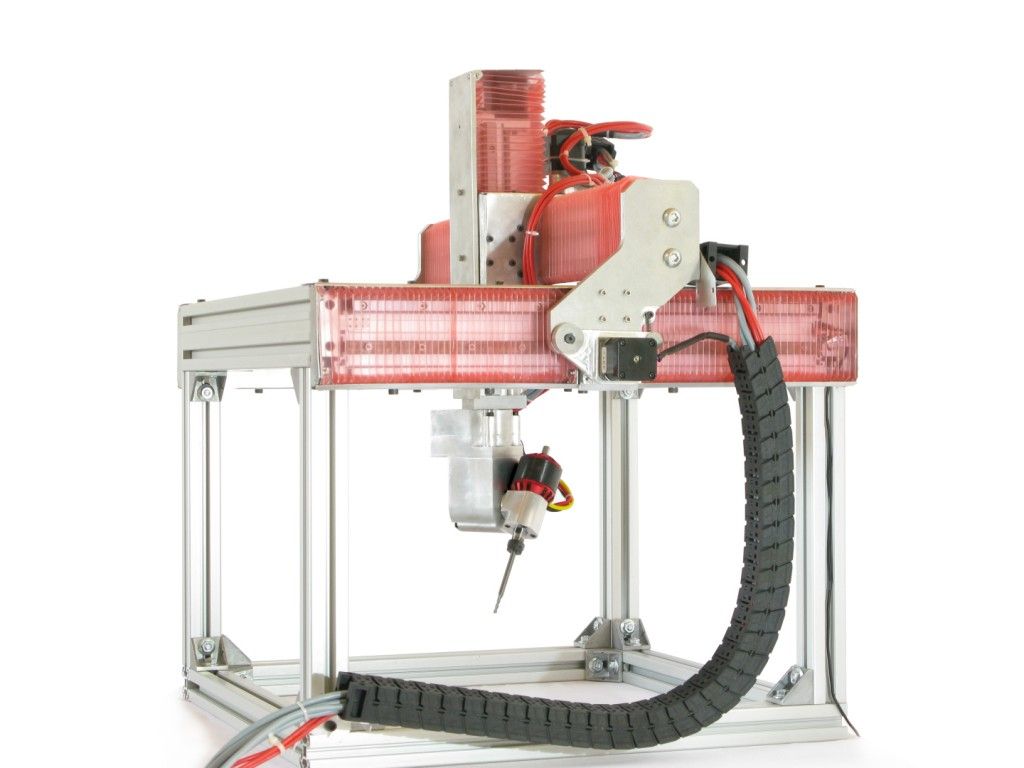
A 3D-printed injector head for Ariane 6 launcher [Image credit: EOS]
Aircraft interior componentsSpotlight: Airbus
3D-printed plastic parts can be incredibly useful for aerospace applications, such as aircraft interiors.
The cabin interiors of a commercial aircraft will need to be updated periodically, a process that can involve replacing components like wall panels. The need for customisation means that parts will typically be produced in low volumes. Quick turnaround times are also a must.
A good example of this is Airbus. As of 2018, the company has produced and is set to install 3D-printed spacer panels on its commercial A320 aircraft. Traditionally, new plastic components would be produced using injection moulding — an expensive and complex procedure for the low volumes, specialised requirements and high complexity needed.
With 3D printing (FDM), Airbus has been able to produce components with complex features like lattice structures, without any additional manufacturing cost.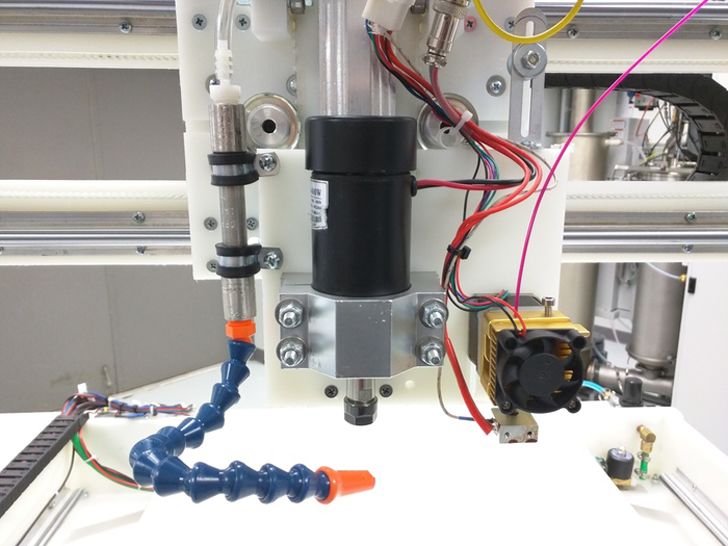 The result: spacer panels that are 15% lighter than panels created using traditional methods — contributing to the weight reduction of the aircraft itself.
The result: spacer panels that are 15% lighter than panels created using traditional methods — contributing to the weight reduction of the aircraft itself.
Spotlight: Nano Dimension and Harris Corporation
When it comes to defence, 3D printing has the potential to change the way end parts for military equipment are produced. Current defence applications range from complex brackets and small surveillance drones, to jet engine components and submarine hulls.
Electronics 3D printing is a young yet increasingly growing area of interest for defence companies. With the technology, engineers are currently able to design and produce prototypes of complex circuit boards and antennas in-house.
For manufacturers, this means being able to accelerate the product development process by eliminating the need to outsource high-value projects to third parties.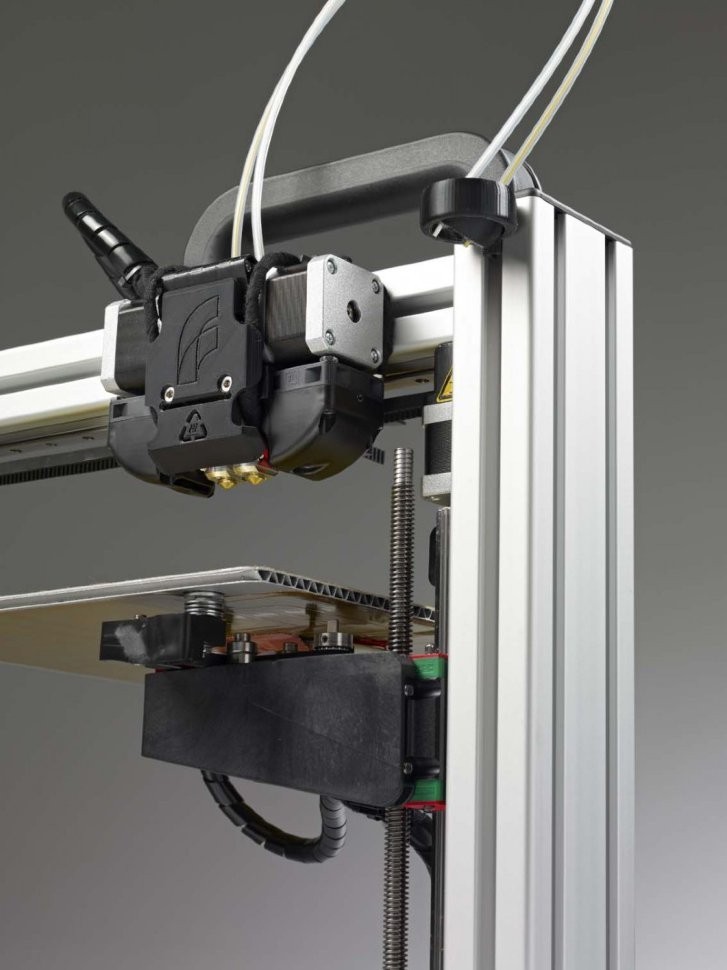
Antennas are an important example of how 3D printing is speeding up the design process for electronic devices.
Take the case of Harris Corporation which, alongside Nano Dimension, a manufacturer of 3D printing electronics systems, achieved a key breakthrough in 2018 when it produced antennas using 3D printing.
Harris Corp. and Nano Dimension successfully partnered to produce a 3D-printed RF circuit [Image credit: Harris Corp.]
ToolingSpotlight: Latécoère & Moog Aircraft Group
Aerospace companies can also benefit from 3D printing by using the technology to produce custom tooling equipment like jigs and fixtures on demand.
French aerospace manufacturer Latécoère used 3D printing to cut down lead times for custom tooling. Previously, the company used CNC milling to manufacture these tools, with lead times of up to six weeks. Now, with FDM 3D printers, Latécoère can create production tools in just a couple of days — a lead time reduction of 95%.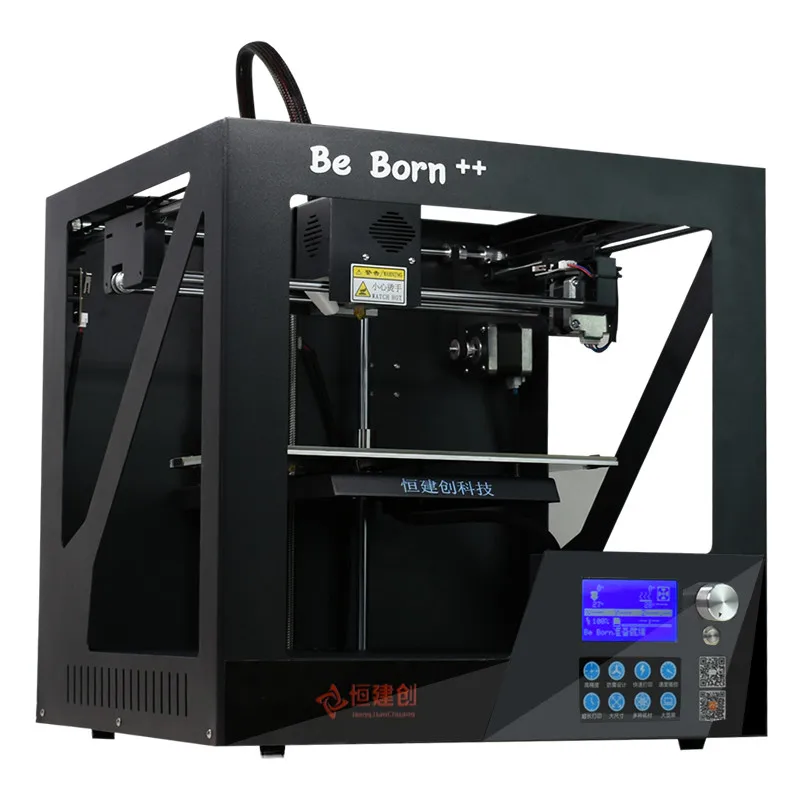
The company claims this new approach to tooling production also cuts costs by 40%. Notably, the tools are ergonomically customised, making the operator’s job easier and resulting in faster and more efficient production times.
Similarly, the Moog Aircraft Group is using FDM 3D printing to produce tools like coordinate measuring machines (CMM) in-house. In the past, the company outsourced this fixture, with the process taking between 4 to 6 weeks. Now Moog uses 3D printing in-house, making CMM fixtures in approximately 20 hours. Fixtures that would have previously cost over £2,000 can now be made for a couple of hundred pounds.
Spare parts
Spotlight: Satair
Heavily reliant on spare and replacement parts, aerospace companies increasingly require short lead times for this application.
To meet this demand, suppliers to the aerospace industry must find ways to provide manufacturing services faster. Additive manufacturing enables spare parts can be produced quickly at the point of need. This, in turn, reduces the need for vast inventories of stock, helping to reduce inventory costs and ensure parts are produced locally.
Additive manufacturing enables spare parts can be produced quickly at the point of need. This, in turn, reduces the need for vast inventories of stock, helping to reduce inventory costs and ensure parts are produced locally.
Satair is an Airbus subsidiary that specialises in the distribution of spare parts, offering additively manufactured plastic and metal parts.
The spare parts provider uses 3D printing to produce customised parts and tooling, with the technology helping to greatly reduce lead times and simplify complex supply chain logistics. With this strategic approach, the company is able to improve its turnaround times by quickly producing spare parts for maintenance operations.
The aerospace and defence industry makes up a significant proportion of the AM market. The reasons for this are simple: additive manufacturing offers enormous value, from improving aircraft performance to offering a more agile approach to spare parts production.
Making the move towards production, however, requires additive manufacturing to overcome certain challenges. These include the certification of 3D-printed parts, better process repeatability and security.
These include the certification of 3D-printed parts, better process repeatability and security.
Nevertheless, with considerable investment being made to develop and certify 3D printing processes and materials, the future of 3D printing for the aerospace and defence industry certainly looks bright.
Related articles
CHAPTER 2
Automotive
The automotive industry is a growing user of additive manufacturing: in 2019 alone, global automotive AM revenues reached $1.4 billion. This figure only looks set to increase, as revenues relating to AM in automotive part production are expected to reach $5.8 billion by 2025, according to a SmarTech report. In areas like motorsports and performance racing, design tools like generative design and topology optimisation are slowly changing traditional approaches to designing parts.
While prototyping currently remains the main application of 3D printing in the automotive industry, companies are increasingly finding other use cases, such as tooling. Additionally, the several automotive companies are beginning to find innovate end-use applications for 3D printing, signalling an exciting development for the sector.
The Benefits of 3D printing for Automotive
Faster product development
Prototyping has become a key part of the product development process, offering a means to test and validate parts before they are manufactured. 3D printing offers a quick and cost-effective approach to designing and producing parts. Since the need for tooling is eliminated, product teams can significantly accelerate product development cycles.
Greater design flexibility
The ability to produce designs quickly gives designers greater flexibility when testing multiple design options. 3D printing enables designers to make quick design changes and modifications in a fraction of the time.
3D printing enables designers to make quick design changes and modifications in a fraction of the time.
Customisation
3D printing offers automakers a cost-effective and flexible way to produce customised parts. Within the luxury and motorsports segment of the industry, companies are already using the technology to produce personalised parts for both the interior and exterior parts of a vehicle.
Create complex geometries
With the majority of car components requiring complex geometries like internal channels (for conformal cooling), thin walls and fine meshes, AM enables highly complex parts to be produced that are still lightweight and durable.
Automotive applications
Spotlight: Porsche
3D-printed custom seats
Porsche has recently introduced a new concept for sports car seating that leverages 3D printing and lattice design.
The new seats feature polyurethane 3D-printed central seat and backrest cushion sections, which can be customised by three firmness levels: hard, medium and soft.
With its personalised seating, the German automaker is taking cues from the motorsport sector, where customised driver-specific seat fitting is a norm.
Porsche plans to 3D print 40 prototype seats for use on European race tracks as early as May 2020, with customer feedback being used to develop the final street-legal models for mid-2021.
Down the line, Porsche wants to expand seat customisation beyond firmness and colour by personalising the seat to customer’s specific body contour. 3D printing currently remains the only technology that can enable this level of customisation.
PrototypesPrototyping has been the primary use of 3D printing for automotive applications. With the ability to produce multiple design iterations in a shorter amount of time, 3D printing is an effective tool for product development. The technology has now evolved to where it can be used to create functional prototypes using high-performance materials like ULTEM and PEEK.
The technology has now evolved to where it can be used to create functional prototypes using high-performance materials like ULTEM and PEEK.
Spotlight: Ford Motor Company
To produce high-quality parts, tooling aids are needed for manufacturing and assembly. While tooling equipment (like injection moulds, jigs and fixtures) aren’t prototypes or end parts, they remain a vital element of the production process.
With 3D printing technologies like FDM and SLS, automotive companies are able to produce tooling aids at a fraction of the cost, greatly increasing efficiency on the factory floor. Tooling can also be customised for improved functionality at a significantly lower cost than conventional methods.
A great example of tooling innovation is Ford which, in 2018, was awarded for its use of of 3D printing for tooling.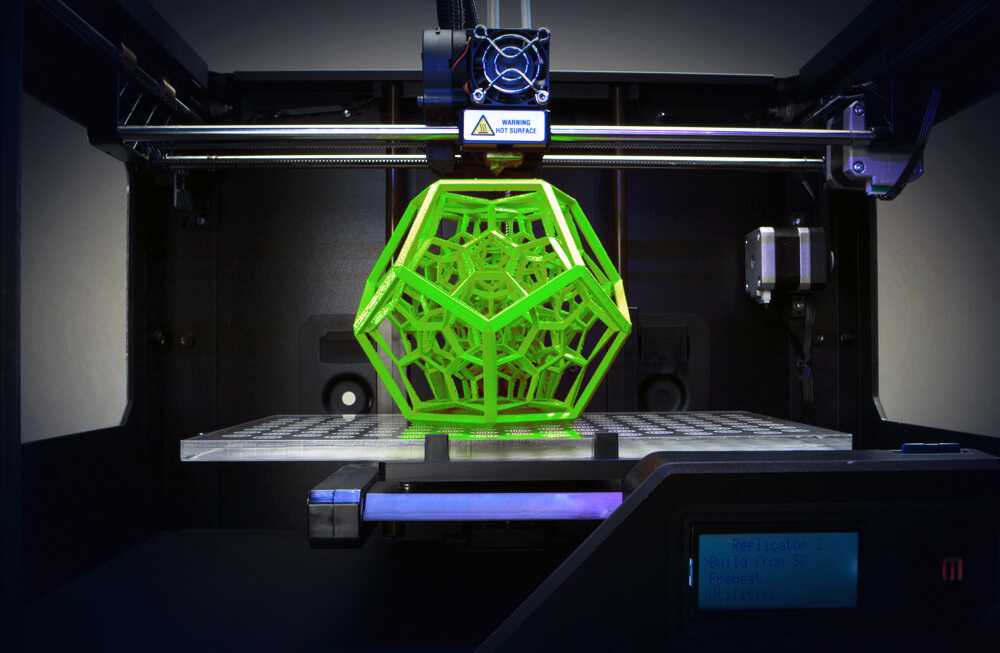
One of the company’s award-winning tools was an assembly lift assist, produced using FDM. The 3D-printed part cost 50% less than a conventional counterpart and significantly reduced lead times.
Weight reduction was a key factor in this use case — a lighter lift assist device would make it easier to operate and reduce repetitive motion injuries. With 3D printing, engineers were able to produce a significantly lighter fixture.
Spare and replacement parts
Spotlight: Porsche
Inventory costs constitute a significant proportion of expenditure for many automotive OEMs and suppliers. Within conventional manufacturing, mass producing spare parts is commonplace. However, this often leads to long delivery times and high inventory costs.
Additive manufacturing has the potential to transform the way spare parts are manufactured and distributed — through on-demand manufacturing. This means that parts are produced locally, at the time of need. Coordinating supply and demand in this way could not only drastically reduce inventory costs, but also slash delivery times to the end customer.
This means that parts are produced locally, at the time of need. Coordinating supply and demand in this way could not only drastically reduce inventory costs, but also slash delivery times to the end customer.
German car manufacturer Porsche is taking advantage of 3D printing for this very purpose. For collectors, Porsche’s Classic cars can be highly sought after. Not having the right part, however, can mean that a car can no longer function. Yet the relatively low demand, coupled with short production runs, means that stocking a high number of spare parts for such cars isn’t feasible.
This is where 3D printing comes in.
In early 2018, the company announced its use of 3D printing to produce spare parts for its rare and classic cars. Combining SLM technology for metal components and SLS for plastics, Porsche has been able to make a wide selection of high-quality rare parts available to its customers at a fraction of the cost.
End-use partsSpotlight: BMW
One of the major barriers to using additive manufacturing for production is the high production volumes typically required for the automotive industry (over 100,000 parts per year). However, recent years have seen great improvements in the speed and size of industrial printers as well as greater material availability.
However, recent years have seen great improvements in the speed and size of industrial printers as well as greater material availability.
As a result, AM is becoming a viable manufacturing option for certain medium-size production runs, particularly in areas like motorsports and luxury vehicles, where production numbers are lower than average.
With over 1 million parts 3D-printed in the last decade, BMW finds itself among the industry’s frontrunners when it comes to additive manufacturing.
In the case of end parts, BMW has successfully used 3D printing to produce a metal fixture for its i8 Roadster model. Engineers created an optimised roof bracket (a fixture that helps to fold and unfold the vehicle’s soft top) that weighs 44% less than previous versions.
Today, the company can 3D print up to 238 of these parts per platform, making the roof bracket the first mass-produced, additively manufactured automotive component.
3D printing is gradually changing the way vehicles are developed today.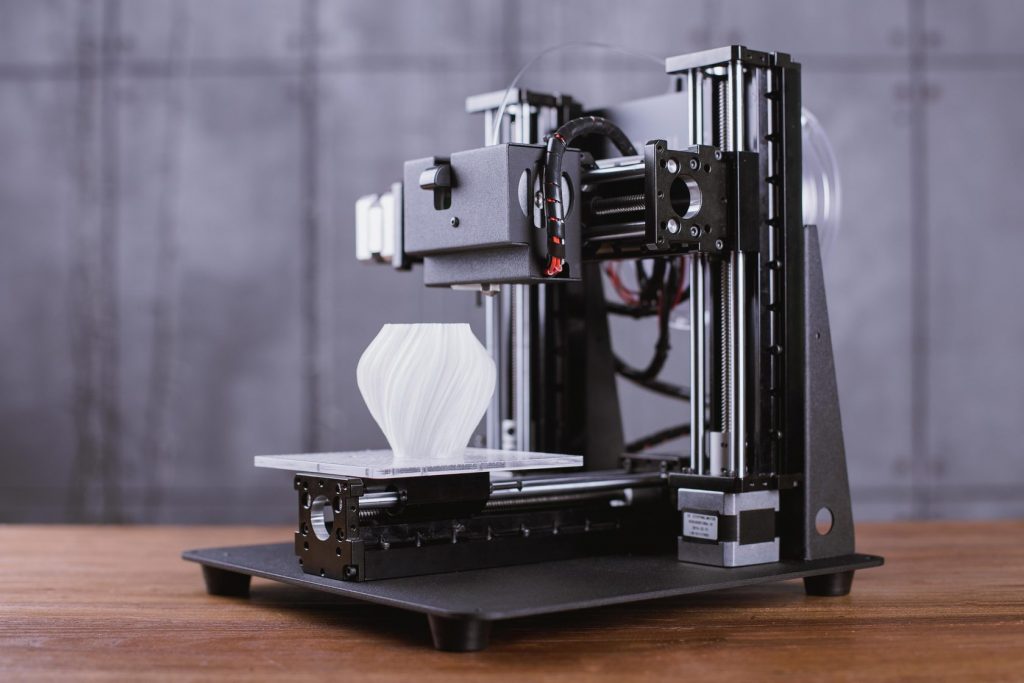 Whether it’s a commercial vehicle, truck or racing car, the technology offers automotive engineers and designers the tools to test the limits of design and performance.
Whether it’s a commercial vehicle, truck or racing car, the technology offers automotive engineers and designers the tools to test the limits of design and performance.
Yet, the key drivers behind the increased adoption of 3D printing in automotive remain the ability to speed up time to market and reduce product development costs. As 3D printing technologies evolve, the prospect of large-scale manufacturing will become increasingly likely.
Related articles
CHAPTER 3
Medical & Dental
The medical and dental industry is one of the fastest-growing adopters of additive manufacturing. And with 97% of medical AM professionals confident that the use of 3D printing will continue to increase within the sector, this trend seems set to continue. From medical devices to prosthetics and even bioprinting, the applications of additive manufacturing for the medical industry are versatile and wide-ranging.
From medical devices to prosthetics and even bioprinting, the applications of additive manufacturing for the medical industry are versatile and wide-ranging.
The Benefits of 3D printing for Medical & Dental
What is driving this growth? The geometric freedom afforded by AM and the ability to provide more personalised patient care cost-effectively is hugely appealing. And when coupled with CT scanning, 3D printing can be used to provide patient-specific solutions, such as implants and dental appliances.
Enhanced medical devices
3D printing is an ideal technology for creating or optimising designs for medical devices. Thanks to low-cost rapid prototyping, medical device manufacturers have greater freedom in designing new products, helping to bring new medical devices to the market much faster.
Personalised healthcare
The medical industry can leverage the capabilities of 3D printing to create patient-specific devices. For example, devices such as prosthetics and implants can be produced faster and more affordably than with traditional manufacturing methods.
Medical applications
Spotlight: 3D printing for clear aligners
Clear aligners are dental devices used to adjust and straighten teeth. It is estimated that the majority of clear aligners are currently produced using 3D-printed moulds.
The key technologies enabling this are Stereolithography (SLA) and Material Jetting, due to their high speed and accuracy. In addition to these resin-based processes, HP’s powder-based technology, Multi Jet Fusion, is also gaining traction.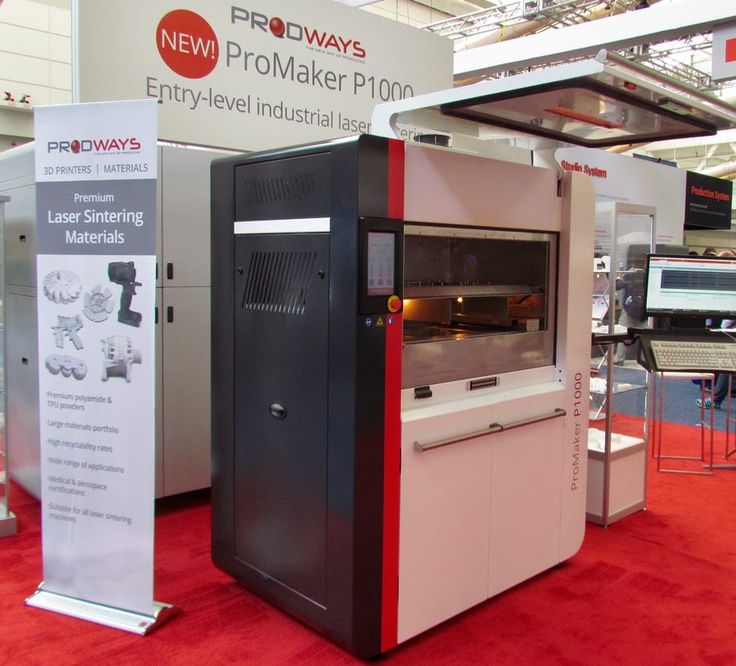
The key reason for using 3D printing in manufacturing clear aligners is the ability to customise them cost-effectively, since clear aligners are inherently individualised products.
One example of a company using 3D printing for clear aligners in Align Technology, the largest producer of clear aligners, well-known under the Invisalign brand. In 2019, the company has reportedly produced over half a million unique 3D-printed parts per day.
Given such volumes, it’s not a surprise that SmarTech Analysis, a leading 3D printing research firm, named clear aligners “the single highest volume application for 3D printing technologies in the world today.”
With the ever-growing capabilities of 3D printing, we expect that clear aligner companies will ultimately shift to direct 3D printing of aligners within the next five years.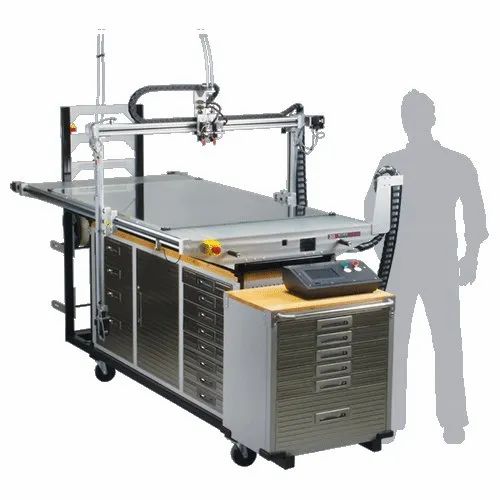
Digital dentistry
Digital dentistry - the introduction of digital technologies in dental practice - is transforming the dental sector. Traditional processes used to create dental impressions are gradually being replaced by digital technologies, with desktop 3D printing systems, 3D scanners and materials becoming more accessible.
By combining intraoral scanning and 3D printing, dental labs can create dental products like crowns, bridges and bite splints, that perfectly match a patient’s anatomy.
The rate of success in dental implantology can be also increased with the help of 3D printing, as custom dental surgical guides are produced. This improves the quality and accuracy of dental work. These surgical guides can be produced faster and more cheaply.
Formlabs, a manufacturer of SLA and SLS desktop machines, has estimated that over 50,000 surgeries have been performed using surgical guides made on its machines.
Spotlight: Lima Corporate
3D printing can be used to create custom prosthetic and orthopaedic devices from a number of certified biocompatible plastic or metal (e.g. titanium) materials.
When it comes to implants, 3D printing is currently being used to create hip and knee joint replacements, cranial reconstruction implants and spinal implants.
As of 2019, over 600,000 implants are estimated to be produced with the help of 3D printing. By 2027, this number is set to top 4 million.
One company specialising in 3D-printed implants is Lima Corporate. One of the pioneers of using 3D printing for orthopaedic products, the Italian company is currently using at least 15 metal 3D printers to produce parts like acetabular cups, which are essential parts of hip prostheses.
In one example, a mountaineer needing a hip replacement, received Lima’s hip implant featuring a 3D-printed acetabular cup.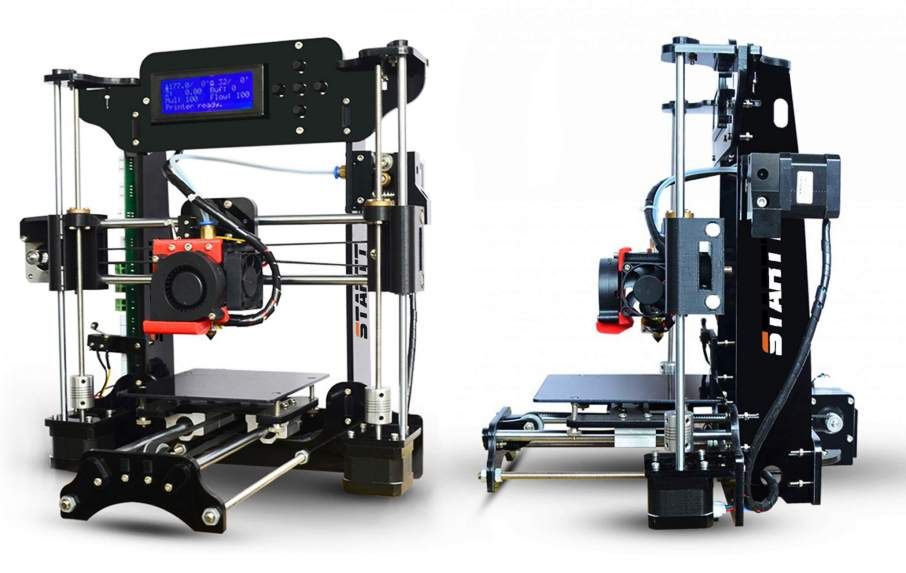 Thanks to 3D printing, it was possible to produce a cup that mimics the porous structure of natural bone, improving osseointegration, a process which allows an implant to become a permanent part of the body.
Thanks to 3D printing, it was possible to produce a cup that mimics the porous structure of natural bone, improving osseointegration, a process which allows an implant to become a permanent part of the body.
Ultimately, the patient was able to walk and climb again just after two and a half months after the implantation.
BioprintingSpotlight: Organovo
While 3D printing cannot yet be used to 3D print body parts, the technology can be used to create artificial living tissues that can mimic natural tissue characteristics.
Known as bioprinting, this technology is used for research and testing, with great potential for regenerative medicine. Instead of using plastics or metals, 3D bioprinters layer living cells, referred to as bio-ink, mimicking organ tissues.
3D bioprinting
is already being used to fabricate relatively simple artificial tissues and structures such as cartilage, skin, and bone, as well as blood vessels and cardiac patches.
Organovo is a US-based medical laboratory and research company that is exploring the use of 3D printing to produce bioprinted tissue. Its bioprinting process turns cells taken from donor organs into bio-ink. These cells are then laid down layer-by-layer to build up small areas of tissue.
These 3D printed tissues could provide a better way to test new drugs and therapies, overcoming the need to test on animals or perform risky clinical trials.
Surgical planning and testingHospitals are increasingly incorporating 3D printing in their labs to create patient-specific anatomy models. Based on a patient’s MRI and CT scans, these models are usually created using full-colour 3D printing techniques like Material Jetting to ensure they remain highly precise and realistic.
Surgeons can then use these 3D-printed organ replicas to plan and practice a surgical operation prior to performing it. This approach has been proven to speed up procedures, improve surgical precision and minimise invasion.
This approach has been proven to speed up procedures, improve surgical precision and minimise invasion.
Currently, the medical and dental sector is estimated to represent 11% of the overall additive manufacturing market. The core strength of 3D printing for this sector is its ability to deliver on more personalised healthcare, in addition to opportunities to improve presurgical planning and drive device innovation.
However, for 3D printing to truly transform the medical and dental market, there are still key challenges that will need to be addressed, most notably the certification of 3D printing processes and devices.
With that said, current trends suggest that the use of 3D printing in medical and dental will continue to advance, paving the way for more advanced applications and new treatment solutions.
Related articles
CHAPTER 4
Consumer Goods
To remain competitive in an ever-changing market landscape, retailers and consumer-oriented industries must be able to adapt to evolving consumer demands and industrial trends in an agile way.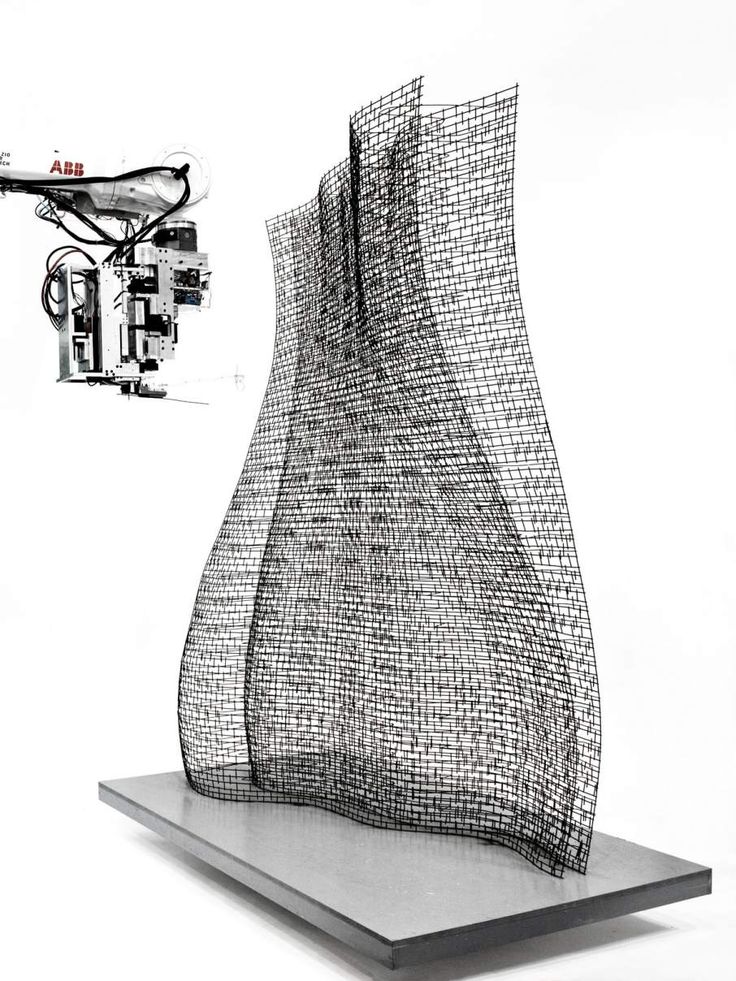 Additive manufacturing meets these needs, providing a cost-effective approach to product development, testing and production. From consumer electronics to toys and sportswear, key players within the consumer goods industry are increasingly recognising 3D printing as a valuable addition to existing manufacturing solutions.
Additive manufacturing meets these needs, providing a cost-effective approach to product development, testing and production. From consumer electronics to toys and sportswear, key players within the consumer goods industry are increasingly recognising 3D printing as a valuable addition to existing manufacturing solutions.
Additionally, the recent growth of industrial desktop 3D printers has brought the technology closers to the hands of designers and engineers, accelerating the the opportunities of what can be achieved within the sector.
The Benefits of 3D Printing for Consumer Goods
Enhanced product development
Before any new product can be launched, its design must first be validated, tested and approved. This process happens during the product development stage. Prototypes and models are a vital aspect of this process, as they are commonly used for market research, testing and validation purposes.
Prototypes and models are a vital aspect of this process, as they are commonly used for market research, testing and validation purposes.
3D printing significantly speeds up this process by enabling the rapid production of prototypes and models. Using the technology, product designers and engineers are able to develop and test multiple iterations and perform repetitive testing in a much shorter time frame.
Faster time-to-market
The ability to accelerate product development times has a direct impact on speed to market. The case is simple: by being able to test and validate products faster, product designers and engineers companies can speed up their time-to-market.
Some companies have even gone one step further by 3D printing products for pilot product testing with consumers. In 2015, PepsiCo developed several prototypes of its Ruffles chips brand, subsequently testing the sizes with consumers to identify which was preferred. The most popular prototype was then used to create a new potato chip slicer at the PepsiCo manufacturing plants.
This application of 3D printing enabled PepsiCo to bring to market various flavours of its Ruffles brand much faster, with multiple flavours available in well over a dozen markets globally.
Mass customisation
Perhaps the biggest impact of 3D printing for consumer goods lies in the potential of creating personalised products, tailored to the requirements of consumers.
With traditional manufacturing, where products are typically made en masse, the production of customised products in small batches is highly inefficient and not cost-effective.
These limitations are eliminated with additive manufacturing — and companies are already taking advantage of the ability to provide a customised service to customers.
Consumer Goods Applications
Spotlight: Adidas
Footwear
Adidas, for example, 3D prints midsoles for its Futurecraft 4D sneakers, using Carbon’s proprietary Digital Light Synthesis™ technology. One of the key benefits of using 3D printing in this way is to improve shoe performance for various sports, thanks to the various properties of the midsole.
One of the key benefits of using 3D printing in this way is to improve shoe performance for various sports, thanks to the various properties of the midsole.
The one-of-a-kind design of a midsole, which features 20,000 struts for better cushioning, would be impossible to create with traditional techniques. With injection or compression moulding, for example, it would be virtually impossible to create midsoles with the variable properties needed — and require assembly.
Adidas's Futurecraft 4D sneakers [Image credit: Adidas]
Beauty & Cosmetics
Spotlight: Chanel
While 3D printing has historically been seen as the sole preserve of industrial manufacturing, the technology is also finding its way into the beauty industry.
French fashion company Chanel is one company demonstrating the potential of 3D printing, having launched the world’s first 3D-printed mascara brush in 2018. The Révolution Volume mascara brush was created using SLS, a technology that uses a laser beam to fuse layers of polyamide powder.
The Révolution Volume mascara brush was created using SLS, a technology that uses a laser beam to fuse layers of polyamide powder.
With 3D printing, the design of the brush has been optimised - for example, the rough, granular texture improves the adhesion of the mascara to the lashes.
Although 3D printing might be new to the cosmetics industry, pioneers like Chanel demonstrate show how the technology could transform the way cosmetic products are manufactured.
Image credit: Gillette
Jewellery
Spotlight: BOLTENSTERN
At first thought, jewellery may not seem to be an obvious application of additive manufacturing. However, the technology is benefiting jewellery makers in two ways. The first is by 3D printing investment casting patterns, which are cheaper and faster to produce than traditional methods.
A second approach is to 3D print jewellery directly using precious metals. Both ways enable custom jewellery with thin walls and intricate details to be created which would be impossible to make through other means.
Both ways enable custom jewellery with thin walls and intricate details to be created which would be impossible to make through other means.
Austrian jewellery company BOLTENSTERN has used 3D printing to produce jewellery pieces such as bracelets, earrings, necklaces and cufflinks.
In partnership with COOKSONGOLD, a supplier of precious metal powders, BOLTERNSTERN used DMLS technology to create its “Embrace” jewellery collection. According to the jewellery maker, this is the first commercial collection on the market to be directly 3D printed in gold and platinum.
Featuring various shapes, including a start, cloud and flower, the technology made it easier to reach unprecendented levels of customisation and highly complex designs. The customisable nature of the collection means that customers can choose from a variety of combinations and variations.
Bikes
Spotlight: Arevo & Franco Bicycles
A handful of specialised bike manufacturers have started integrating 3D-printed components into their products.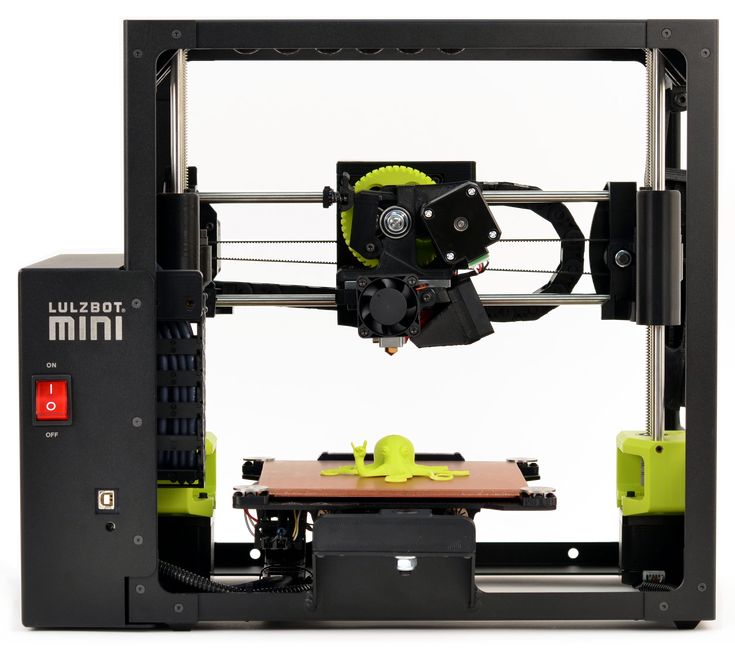
For example, Franco Bicycles has launched a new line of eBikes, featuring a 3D-printed composite frame manufactured by California-based start-up, Arevo. Part of the Emery bike range, the frame is featured in the Emery ONE eBike, making it the world’s first bike with a 3D-printed frame.
One of the unique aspects behind the production of the 3D-printed carbon-fibre frame is that it was manufactured as a single part, as opposed to a multi-piece assembly that is typical for traditional bike frames. Enabling this is a proprietary robotic 3D printing process and patented generative design software, developed by a 3D printing company, Arevo.
Thanks to 3D printing, the lead time for the Emery ONE bike frame has been reduced from an 18 months cycle to just a few days. Additionally, the company was also able to significantly reduce product development costs.
When compared to pioneering industries like aerospace and medical, adoption of additive manufacturing within the consumer goods industry is still relatively young. However, the benefits of greater customisation, faster time-to-market and product development are increasingly recognised by the industry.
However, the benefits of greater customisation, faster time-to-market and product development are increasingly recognised by the industry.
As additive manufacturing matures, we’ll likely see more consumer brands following the path of the industry’s early adopters, pushing the technology towards new applications and opportunities.
Related articles
CHAPTER 5
Industrial Goods
The industrial goods sector includes the production of machinery components, tooling and equipment used in the manufacture of other goods. With increasing production costs and the digitisation of manufacturing, industrial OEMs must constantly evolve to maintain operational agility and keep costs down. Manufacturers are therefore increasingly turning to 3D printing to stay agile, responsive, and innovative.
Key Benefits of 3D Printing for Industrial Goods
Design complexity
As we’ve seen in other industries, rapid prototyping is a key use case of 3D printing for the industrial goods sector.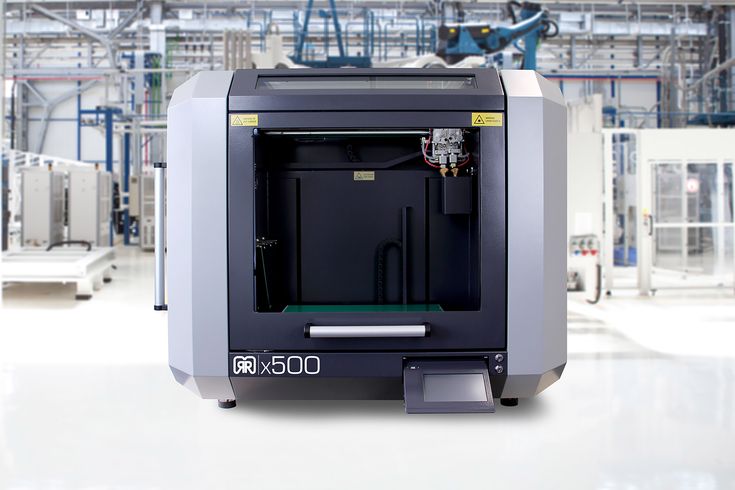 Design changes that would have taken months using conventional manufacturing methods can be implemented much faster, oftentimes in under a week, using 3D printing.
Design changes that would have taken months using conventional manufacturing methods can be implemented much faster, oftentimes in under a week, using 3D printing.
Shorter lead times
According to Sculpteo’s 2018 State of Industry report, 52% of those within the industrial goods sector favour 3D printing most for its ability to reduce lead times. Since 3D printing requires no tooling, manufacturers can reduce the time needed to produce parts, bypassing a time-consuming and costly tooling production step.
Design complexity
3D printing is a cost-effective technology for producing parts with complex geometries. Designs that would otherwise be impossible to produce with conventional manufacturing can now be produced with 3D printing.
On-demand production
Since 3D printing can produce physical parts from digital files in a matter of hours, companies can leverage a new model of manufacturing parts on demand.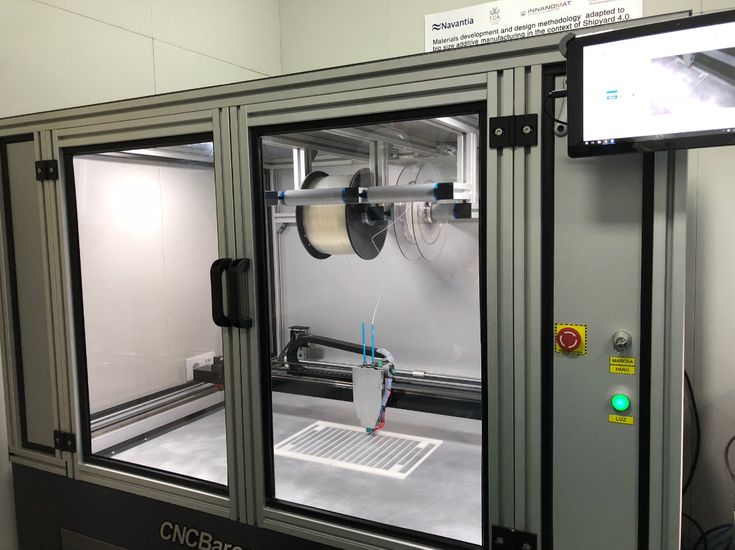
Industrial Goods Applications
Spotlight: Bowman Additive Production
End-use parts
Major industrial goods companies are already investigating additive manufacturing as a mean sof producing end parts. For example, 3D printing is helping to transform the production of bearings at Bowman Additive Production, a leading UK bearings manufacturer.
Using HP’s Multi Jet Fusion technology and PA11 nylon material, Bowman has been able to manufacture its bespoke Rollertrain cage. The part indicates the complexity of the manufacturing process; it contains an interlocking structure that uses the rolling elements to pin together each section of the cage.
The result: bearings that possess a 70% increased load-bearing capacity and an increased working life of up to 500%.
Tooling
Spotlight: Eckhart and Wilson Tool International
The ability to 3D print manufacturing aids, such as jigs, gauges and fixtures, opens up a new range of possibilities for industrial goods manufacturers.
In addition to jigs and fixtures, 3D printing is revolutionising the production of hard tooling like moulds, used in injection moulding and die casting. Traditionally, moulds are CNC milled and may undergo multiple design iterations, taking weeks if not months, before the final design is achieved. This results in a process both time-consuming and very costly, with a considerable material waste.
Now, metal 3D printing technologies like DMLS or SLM can be used instead, allowing tool-making companies not only to reduce material waste but improve the functionality of a mould. This can be achieved by integrating more complex-shaped cooling channels within the design, substantially improving the cooling characteristics of a mould.
Eckhart, a company providing manufacturing solutions, has recently adopted 3D printing with the aim of replacing existing metal tools with 3D-printed equivalents. 3D printed tools offer multiple benefits, according to the company, including improved line of sight, lightweight components and improved design and ergonomics.
Wilson Tool International, the largest independent tooling manufacturer, is another company that has recognised the advantages of additive manufacturing for tooling, after launching its 3D printing division — Wilson Tool Additive — in late 2018. The AM division will see the company offering custom-made jigs, fixture and tooling equipment using FDM and vat polymerisation technologies. The benefits? Customers can expect to receive made-to-order bending tools and support parts in a matter of hours as opposed to days or weeks.
Spare parts
Spotlight: Siemens Mobility
Thanks to on-demand 3D printing, manufacturers can produce spare parts quickly and cost-effectively. This approach is beneficial, for example, when legacy equipment requires a replacement that may be out of production or difficult to procure. 3D printing spare parts at the point of need also can help reduce inventory, bypassing the costly storage of spare parts that have low demand.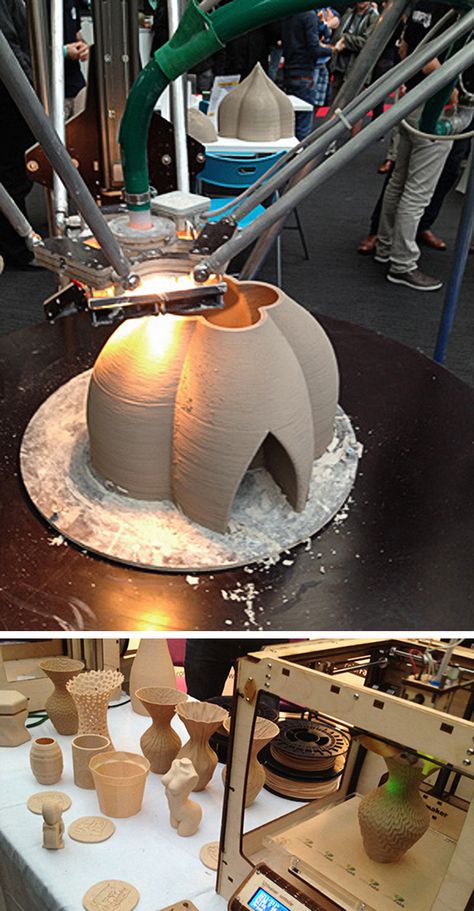
Siemens Mobility is one example of a company using 3D printing to manufacture spare parts and tooling on-demand at the Siemens Mobility RRX Rail Service Centre. With roughly 100 trains expected to enter the depot each month, 3D printing will play an important role in optimising spare part production.
The 3D-printed parts are said to reduce cost and lead-times from week to hours whilst also bringing greater operational agility.
For industrial manufacturers, 3D printing offers new ways to improve manufacturing processes, develop new business models and drive innovation.
While further advancements are still needed to accelerate adoption of the technology even further, such as process repeatability and part quality, as industrial AM capabilities continue to evolve, so to will the applications of the technology within the sector.
To prepare for this future, industrial OEMs must consider the need to implement an AM strategy for their organisations.
Related articles
CHAPTER 6
What is the Future of 3D Printing?
Throughout this guide, we’ve seen how 3D printing is moving beyond the boundaries of rapid prototyping. New possibilities for serial production and fully virtual inventories could soon become a reality.
New possibilities for serial production and fully virtual inventories could soon become a reality.
The industrial applications highlighted in this guide demonstrate the value of 3D printing to existing manufacturing workflows. While there are several drivers behind this transition, these can be broadly summarised into two groups:
Product Innovation: refers to the expanded design possibilities to create innovative new parts and products, including complex lattice structures and other geometries, lightweighting, customisation, part count reduction and multi-material 3D printing.
As of 2021, we’ve seen 3D printing making huge leaps forward, pointing to even more exciting opportunities on the horizon. As it stands, the potential of the technology is really only starting to be fully unlocked. However, as companies across industries move ever-more towards smarter, digital manufacturing, the relevance of industrial 3D printing will only continue to increase.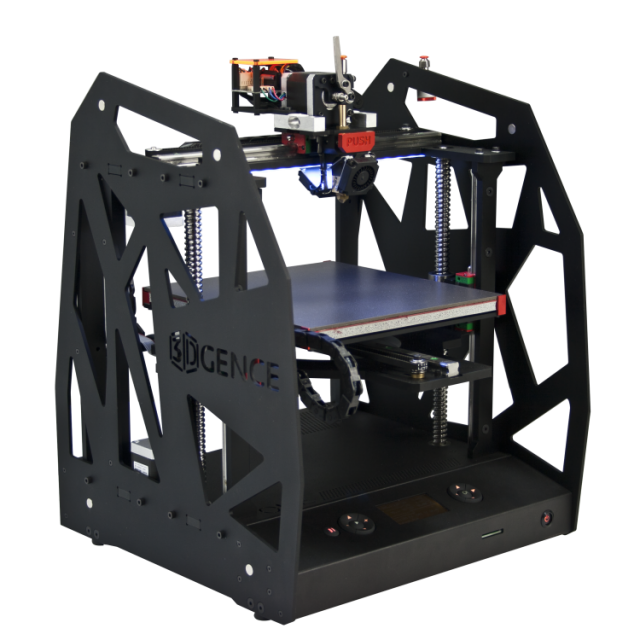
Industrial metal 3D printers
Technology | Benefits | Usage examples | Equipment selection
Metal 3D printing is rightfully considered one of the most promising technologies that can replace traditional production methods in the near future. metal 3D printers are already appearing today in industrial plants, construction sites, design offices and other industries.
Industrial Metal 3D Printers are the product of the most technologically sophisticated Additive Manufacturing business . Attempts to 3D print metal were made in the early stages of 3D printing, and over the past decade have made a tremendous leap in this direction.
Technologies
With the advent of metal 3D printers , the hegemony of traditional technologies was somewhat shaken, but a decade ago, few believed in the possibility of printing, and few imagined that the question of a comprehensive replacement of technologies and means of creating products in metallurgical production would arise .
Today the situation has changed radically. The technology used in the best 3D metal printers has already proven its effectiveness.
Selective Laser Melting (SLM)
This technology allows you to create objects of any geometric shape from metal powder. The principle is based on the ability to create metal models by layer-by-layer melting of powders of various metals and alloys. Such materials include titanium, stainless and tool steels, chromium and alloys, as well as other raw materials.
Machines using SLM technology, such as SLM 280HL and Realizer SLM 250, allow you to create high-precision metal parts of any complexity and geometry directly from a digital model. This technology is excellent for manufacturing high-precision parts and assemblies of various designs. At the same time, 3D printers based on SLM technology provide a huge performance and cost advantage over traditional metal fabrication technologies.
Benefits of
Talking about the prospects of 3D printing with metal can take a long time, but initially it is worth considering in more detail what a modern metal 3D printer is like. Until two decades ago, mold casting was seen as the only cost-effective way to make 3D products. Years passed before the metal 3D printer appeared, capable of competing with, and in the future, replacing traditional methods of metal production.
Until two decades ago, mold casting was seen as the only cost-effective way to make 3D products. Years passed before the metal 3D printer appeared, capable of competing with, and in the future, replacing traditional methods of metal production.
So, what are the advantages of 3D printing with metal compared to standard production methods?
1. More complex shapes and designs.
Additive technologies give you more design freedom. 3D printing is able to produce much more complex products than the longer standard process can offer. metal 3D printers can create components with pits, cavities, thin walls and closed objects.
2. Low cost.
3D Printer metal printing process does not require any additional tools. Therefore, it is easy to replace the complex and expensive processes of stamping, mold casting. This will not only reduce costs, but also free up funds for the further development of the enterprise.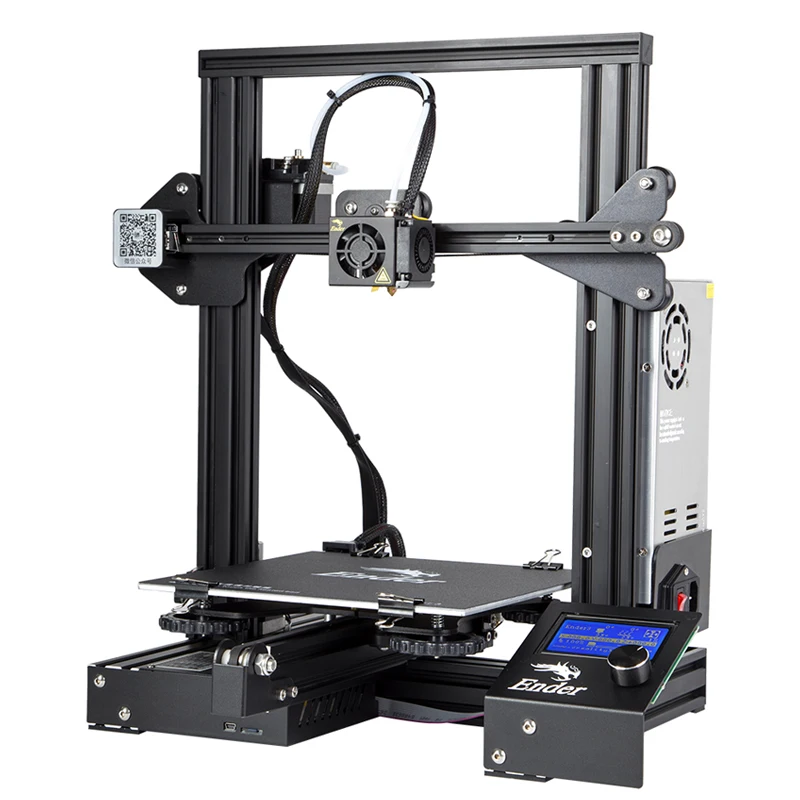
industrial metal 3D printers create products using less kW of energy and generating much less waste. It also reduces costs and eliminates the need to install environmentally friendly equipment.
3. Any combination of materials.
Metal printing technologies allow the use of any combination of powder materials for the needs of the automotive and aircraft industries, the space industry, as well as other types of production. Mixing of various materials based on titanium, nickel and aluminum, as well as various alloys, makes it possible to obtain new components and assemblies in terms of their thermal conductivity, electrical conductivity and other characteristics.
Application examples
Enhancement 9The 0007 industrial metal 3D printer has enabled these machines to replace entire sectors of traditional manufacturing.
For example, thanks to the SLM 500 HL 3D printer, NASA specialists successfully tested titanium nozzles for rocket engines, and a few weeks ago, Elon Musk, the head of the private space company SpaceX, presented the new Dragon v2 orbiter, which also uses engines with 3D printed parts.
What if a tragedy happened to a person and some tissues cannot be restored? 3D printing can carry out prosthetic surgery. For example, the Swedish company Acam, using a Realizer SLM 250 metal 3D printer, creates monolithic metal products, including titanium. Titanium orthopedic prostheses have become one of the most sought-after products, and their number has already exceeded thirty thousand copies.
In addition, 3D printed limbs can compete with high-tech designs, but cost ten times less.
Selection of equipment
Globatek.3D is the official dealer in Russia of the best manufacturers of 3D equipment. The company represents world famous brands: 3DSystems, SLM Solutions, Realizer, Artec, Creaform, Solutionix. The equipment of these manufacturers reliably serves in various areas of human activity: from medical laboratories to industrial production.
Globatek.3D provides delivery, setup and efficient operation of equipment. If you need advice on choosing a 3D printer, call +7 (495) 646-15-33 and our experts will answer all your questions.
If you need advice on choosing a 3D printer, call +7 (495) 646-15-33 and our experts will answer all your questions.
How it works. Industrial 3D printer
Photo: Alexander Utkin
Additive technologies are gradually changing the industrial order. Products that can be made using 3D printing are becoming more functional and larger. The number of such parts in the composition of complex equipment is growing. More and more enterprises supplement their production with additive equipment. 3D printers save money and time on the production of parts, they are more environmentally friendly than traditional machines. Using the example of metal 3D printing, which is actively used at Rostec enterprises, we talk about the advantages of industrial printers and the principle of their operation.
Layer by layer
Metal-based additive manufacturing (from Latin addere "to add") is one of the fastest growing technologies in the manufacturing industry. This is a method of creating parts by adding material to a substrate in stages, also called industrial 3D printing. Unlike traditional production (for example, turning or milling), where everything superfluous is cut off from the workpiece, in additive production, on the contrary, the object is gradually created from the desired material, as if grown. The main areas of application for 3D metal printing are prototyping, aerospace, mechanical engineering, instrument manufacturing, medical implants, etc.
This is a method of creating parts by adding material to a substrate in stages, also called industrial 3D printing. Unlike traditional production (for example, turning or milling), where everything superfluous is cut off from the workpiece, in additive production, on the contrary, the object is gradually created from the desired material, as if grown. The main areas of application for 3D metal printing are prototyping, aerospace, mechanical engineering, instrument manufacturing, medical implants, etc.
The main advantages of metal 3D printing are the ability to create objects of complex shapes, reducing the weight of parts without compromising strength, shorter production time, cost-effectiveness and environmental friendliness of the method. Indeed, 3D printers work with a minimum of waste, and special cleaning technologies make it possible to reuse the remnants of raw materials.
3D metal printing allows you to create complex one-piece designs. This makes it possible to exclude many technological operations, such as welding, assembly. 3D printing allows you to combine 30-40 elements in one node without losing functionality and create parts that are simply impossible to obtain on conventional machines.
This makes it possible to exclude many technological operations, such as welding, assembly. 3D printing allows you to combine 30-40 elements in one node without losing functionality and create parts that are simply impossible to obtain on conventional machines.
How a 3D printer works
Metal 3D printing is a general definition for a number of technologies. In general, any technology can be called this when a metal object is created layer by layer using sintering, melting or welding processes. A common type of metal 3D printing is selective laser melting (SLM, Selective laser melting), when a metal powder is fused using a powerful laser. Consider the operation of an industrial printer using this technology as an example.
When using any type of printing, before working with a metal 3D printer, we need a three-dimensional model of the part to be manufactured. It is created using CAD programs - computer-aided design systems. Then the digital model is converted into the STL stereolithographic format and loaded into special software, which divides the model into very thin, 20 to 100 micron thick, horizontal layers, determines the necessary supports, and performs other preparatory work.
Next, we go directly to the printer itself. The chamber of the device is first filled with an inert gas (such as argon) to minimize the oxidation of the metal powder, and then heated to the optimum temperature.
A thin layer of metal powder is spread over the build platform and a high power laser travels at a predetermined speed across the component's cross section, fusing the metal particles together and creating the layer. When the fusion process is completed, the platform moves down one layer thickness and the device spreads another thin layer of metal powder. The process is repeated until the part is completely built.
Parts are usually attached to the assembly platform through supporting structures - supports. The support is necessary to reduce the deformation that can occur due to high processing temperatures, and also removes excess heat. In metal 3D printing, the support is made from the same material as the part and is usually an openwork structure that is removed after the part is created.
After printing is completed, the chamber is cooled to room temperature, excess powder is removed manually. Then the part, together with the platform, is removed from the chamber, subjected to heat treatment and mechanically separated from the platform. After that, all the necessary actions for finishing the part are carried out.
About the Rostec Center for Additive Technologies
Metal 3D printing and other types of additive manufacturing are actively developing at the enterprises of the State Corporation. The integration of these processes within Rostec is carried out by the Center for Additive Technologies (TsAT), created on the basis of holding corporations of the aviation complex. The shareholders of the organization are the holdings UEC, Technodinamika, KRET and Russian Helicopters.
The center has been operating for more than three years and today is the largest enterprise in Russia specializing in full-cycle industrial 3D printing. Parts for the largest domestic aviation projects are created here, such as the PD-14, PD-35, VK-650V, VK-1600V engines, the Ansat helicopter, etc.
Parts for the largest domestic aviation projects are created here, such as the PD-14, PD-35, VK-650V, VK-1600V engines, the Ansat helicopter, etc.
Demonstrator engine VK-1600V at MAKS-2021. Photo: Viktor Molodtsov
At the recently held in the Zhukovsky International Aviation and Space Salon MAKS-2021 near Moscow, several developments using parts created at the Center were presented at once. One of the premieres of the salon was the VK-1600V demonstrator engine for the Ka-62 helicopter, about 10% of whose parts were printed on a 3D printer. And in the VK-650V demonstrator engine for the Ka-226T helicopter, the share of parts printed in the TsAT will already be about 15%. Also at MAKS, Mi-8/17 and Mi-171A3 helicopters were demonstrated, the blanks for the parts of which were created by the Center. As a result of optimization, it was possible to achieve a reduction of up to 30% in the mass of parts and a 50% reduction in the estimated time for finishing machining in comparison with traditional methods.



